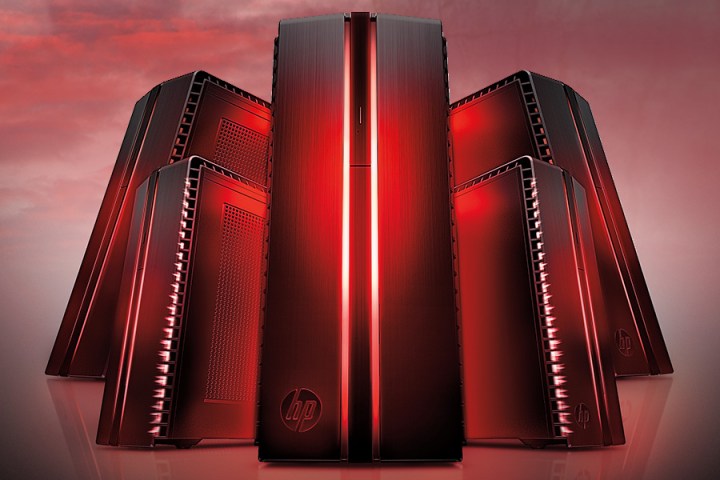
The news arrives by way of unnamed sources in the upstream supply chain who claim that these desktops will actually be supplied by HP and then rebranded with the “Vive” name. The idea is to provide customers with a complete Vive package containing an optimized desktop and headset. These solutions will be offered at a “friendlier price level” than if consumers purchase the desktop and headset separately.
HP is certainly no stranger in the PC gaming market. The company is currently pushing its Omen-branded laptops and desktops, built from the bottom-up with high-performance PC gaming in mind. However, if you dig deep into HP’s store, you’ll find the HP Envy Phoenix, a gaming desktop with a starting price of $950 stemming from a collaboration between HP and HTC. It’s “tuned and tested” for the HTC Vive headset.
That said, those unnamed sources are probably right on the money. In fact, it wouldn’t be surprising if HTC plans to rebrand the HP Envy Phoenix and serve it up with its VR headset in a Vive-branded bundle. That said, if the cheapest HP Envy Phoenix is $950 and the HTC Vive kit is another $800, a bundle would need to be less than $1,750 to be attractive to the general consumer just getting into VR.
Remember, the Vive requires at least an Intel Core i5-4590 or AMD FX 8350 processor, a GeForce GTX 970 or Radeon R9 290 graphics card, 4GB of system memory, one USB 2.0 port, and an open HDMI 1.4 or DisplayPort 1.2 port. The cheapest HP Envy Phoenix desktop sports a meatier Core i7-6700 processor, 12GB of system memory, and a GeForce GTX 745 discreet graphics chip provide to OEMs. That said, HP could possibly serve up a model that closely matches the minimum requirements for a better bundle price point.
This latest report actually compares the HTC Vive with the PlayStation VR headset. That’s like comparing apples to oranges, but from a price point of view, the PlayStation 4/PlayStation VR combination would seemingly look a lot cheaper to the general consumer than the higher-end HTC Vive/desktop combination.
For the uninitiated, the PlayStation VR headset will cost $400 when it ships on October 13. GameStop is currently selling PlayStation 4 bundles such as a 500GB version with Call of Duty: Black Ops III ($350), a 500GB version with Uncharted 4: A Thief’s End ($370), and a 500GB version with Destiny: The Taken King. This is why HTC really needs to address its eventual Vive bundling prices if the sources regarding Vive-branded desktops are correct.
Naturally, HTC hasn’t said anything about offering Vive-branded desktops to complement its VR headset. However, the company reportedly approached MSI and ECS to partner with them for Vive desktops prior to its collaboration with HP. Those negotiations supposedly had no positive results.


